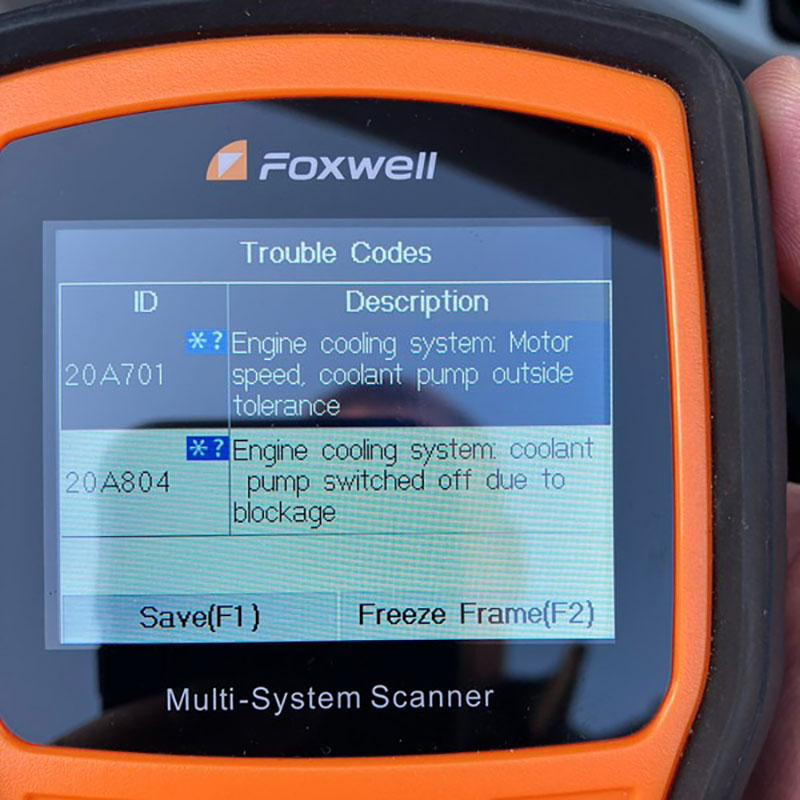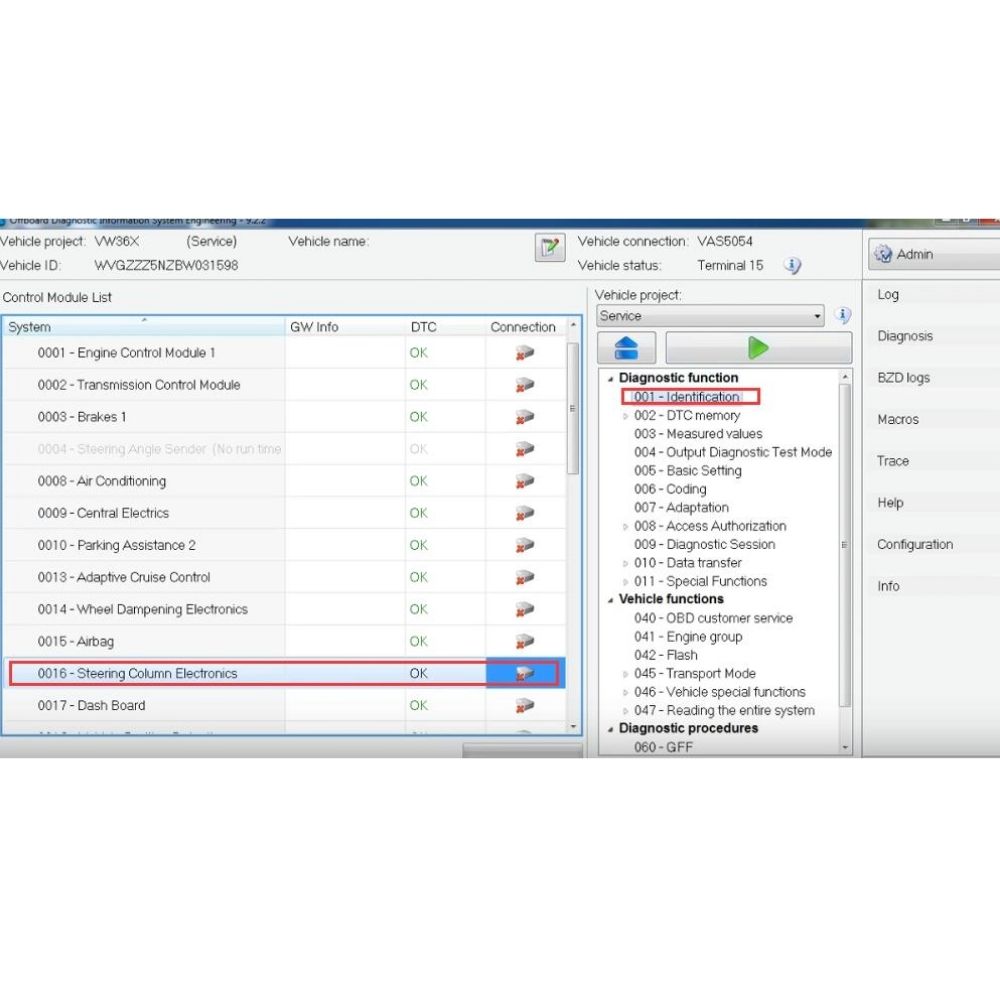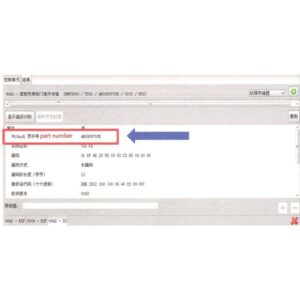

The BMW 20A701 fault code indicates an issue within the engine cooling system, specifically relating to the coolant pump speed being out of tolerance. AutoExplain.com offers expert remote support to help diagnose and resolve this and other complex automotive issues, ensuring efficient and effective repairs. With our expert remote assistance, you’ll swiftly address the 20A701 error, and our team is available via WhatsApp or email.
Table of Contents
ToggleIs the BMW 20A701 fault code popping up on your diagnostic tool? The BMW 20A701 fault code signifies a “Engine Cooling System: Coolant pump speed is out of tolerance” condition. This means the engine control unit (ECU) has detected that the actual speed of the coolant pump is not within the expected range, which can lead to overheating and potential engine damage. This fault often points to issues within the electric water pump system of BMW vehicles.
The fault code 20A701 suggests that the water pump’s operational speed falls outside the parameters set by the engine control unit (ECU). This discrepancy can be triggered by various underlying issues. Let’s delve into the potential causes and related components.
What are the common reasons behind the 20A701 error code in BMWs? The 20A701 error code in BMWs can arise from several factors, including:
What symptoms might you observe when the 20A701 fault code is present? Common symptoms associated with the 20A701 fault code include:
What components are closely related to the functionality of the coolant pump and the 20A701 fault code? Several components are integral to the proper operation of the coolant pump:
How do you systematically diagnose the 20A701 fault code on a BMW? Diagnosing the 20A701 fault code requires a systematic approach to identify the root cause. Here’s a detailed step-by-step procedure:
What should be checked during the initial inspection for the 20A701 fault code? Start with a thorough visual inspection.
How do you use a diagnostic scanner to read and clear the fault codes? Use a diagnostic scanner to read all stored fault codes in the ECU. Note all the codes present, as they may provide additional clues. After noting the codes, clear them and then test drive the vehicle to see if the 20A701 code returns.
What live data parameters are essential for diagnosing the 20A701 fault? Access live data using the diagnostic scanner to monitor the following parameters:
Compare the actual coolant pump speed to the commanded speed from the ECU. If there’s a significant discrepancy, it indicates a potential issue with the pump or its control circuit.
How do you perform tests to verify the functionality of the coolant pump? Perform the following tests to verify the coolant pump’s functionality:
How do you inspect the wiring harness for continuity and shorts? Use a multimeter to perform continuity tests on the wiring harness between the ECU and the coolant pump. Check for any open circuits or shorts to ground. Repair or replace any damaged wiring.
When should you suspect an ECU issue, and how do you proceed? If all other components test within specifications, the ECU may be at fault. Before replacing the ECU, consult with a specialist like AutoExplain.com for advanced diagnostic assistance.
What are the necessary repair steps once the cause of the 20A701 fault code is identified? Once you have identified the cause of the 20A701 fault code, follow these repair steps:
How do you properly replace a faulty coolant pump? If the coolant pump is faulty, replace it with a new, high-quality unit. Follow these steps:
How do you effectively repair damaged wiring and connectors? If damaged wiring or connectors are found, repair or replace them as necessary:
What are the steps to take if the ECU is suspected to be the problem? If the ECU is suspected to be the problem, consider the following:
How do you properly bleed the cooling system to remove air pockets? Bleeding the cooling system is crucial to ensure proper coolant circulation and prevent overheating. Follow these steps:
What maintenance practices can help prevent the recurrence of the 20A701 fault code? Preventative maintenance can help avoid future issues with the cooling system:
How often should you check the coolant level and condition? Regularly check the coolant level and condition. Ensure the coolant is at the correct level and is free from contaminants. Replace the coolant according to the manufacturer’s recommended service intervals.
What should you look for when inspecting hoses and connections? Periodically inspect the coolant hoses and connections for any signs of leaks, cracks, or damage. Replace any worn or damaged components.
Why is it important to monitor the engine temperature regularly? Keep an eye on the engine temperature gauge and address any signs of overheating promptly. Overheating can damage the coolant pump and other cooling system components.
How important is it to adhere to the manufacturer’s recommended maintenance schedule? Follow the manufacturer’s recommended maintenance schedule for the cooling system. This includes inspections, coolant flushes, and component replacements.
What advanced techniques can aid in diagnosing complex cooling system issues? Here are some advanced diagnostic tips and tricks:
How can an oscilloscope help diagnose electrical issues in the cooling system? Use an oscilloscope to analyze the electrical signals to the coolant pump. This can help identify issues with the ECU command signal or pump motor.
What does a cooling system pressure test reveal? Perform a cooling system pressure test to check for leaks in the system. This can help identify leaks that may not be visible during a visual inspection.
How can freeze frame data assist in diagnosing intermittent issues? Analyze freeze frame data stored in the ECU when the 20A701 fault code was triggered. This data can provide valuable clues about the conditions that led to the fault.
How can AutoExplain.com assist in diagnosing and resolving the 20A701 fault code? AutoExplain.com offers specialized remote support to diagnose and resolve the 20A701 fault code, ensuring efficient and effective repairs. With our expert remote assistance, you’ll swiftly address the 20A701 error.
What remote diagnostic services does AutoExplain.com offer? We provide remote diagnostic support via WhatsApp and email, offering expert guidance to identify the root cause of the 20A701 fault code. Our experienced technicians can analyze diagnostic data, provide step-by-step instructions, and offer insights to resolve complex issues.
How can AutoExplain.com help with ECU programming and coding related to the 20A701 fault? AutoExplain.com offers ECU programming and coding services to ensure that your BMW’s ECU is functioning correctly. Whether you need to reprogram the ECU after replacing a component or update the software to address known issues, our experts can help.
Why should you consult with AutoExplain.com’s experts for complex BMW issues? Our team of experienced BMW technicians can provide expert consultation to help you navigate complex diagnostic and repair procedures. We can offer insights and guidance to help you resolve even the most challenging issues.
Can you provide examples of how the 20A701 fault code was resolved in real-world scenarios? Here are a couple of real-world case studies:
A BMW 3 Series (E90) owner experienced overheating and the 20A701 fault code. After performing a thorough diagnostic procedure, it was determined that the coolant pump was failing. The pump was replaced, and the cooling system was properly bled. The fault code was cleared, and the issue was resolved.
A BMW 5 Series (F10) presented the 20A701 fault code intermittently. Upon inspection, a corroded connector was found in the wiring harness leading to the coolant pump. The connector was replaced, and the wiring was repaired. The fault code was cleared, and the issue was resolved.
The BMW fault code 20A701 indicates that the engine control unit (ECU) has detected that the coolant pump speed is out of the specified tolerance, suggesting a potential issue with the cooling system.
Driving with the 20A701 fault code is not recommended, as it can lead to overheating and potential engine damage. It’s best to diagnose and repair the issue as soon as possible.
To check the coolant level, locate the coolant reservoir (typically a transparent plastic container with markings for “min” and “max”). Ensure the coolant level is between these markings when the engine is cold.
The coolant should be replaced according to the manufacturer’s recommended service intervals, typically every 2 to 3 years or 30,000 to 50,000 miles.
Use only the coolant type specified by BMW. This is typically a BMW-specific coolant or a high-quality European coolant that meets BMW’s specifications.
While a low battery is not a direct cause of the 20A701 fault code, it can sometimes cause erratic behavior in electronic components. Ensure the battery is in good condition and properly charged.
To clear the 20A701 fault code, use a diagnostic scanner to connect to the ECU and clear the stored fault codes. However, keep in mind that the code will return if the underlying issue is not resolved.
While some basic troubleshooting steps can be performed by DIYers, diagnosing and repairing the 20A701 fault code often requires specialized knowledge and equipment. Consulting with a professional technician is recommended.
Common mistakes include neglecting to check the wiring and connectors, failing to properly bleed the cooling system, and replacing components without performing thorough testing.
AutoExplain.com offers remote diagnostic support, ECU programming, and expert consultation to help you diagnose and resolve the 20A701 fault code efficiently and effectively.
Facing the BMW 20A701 fault code can be daunting, but with a systematic approach and the right resources, you can resolve the issue and get your BMW back on the road. Remember to follow the diagnostic steps outlined in this guide, and don’t hesitate to seek expert assistance from AutoExplain.com.
Need Expert Help with Your BMW?
Contact AutoExplain.com today for remote diagnostic support, ECU programming, and expert consultation. Our team of experienced BMW technicians is ready to help you resolve the 20A701 fault code and other complex issues.
Let AutoExplain.com be your trusted partner in keeping your BMW running smoothly.








At AutoExplain, we provide automotive online repair service, auto repair tips, car repair manuals & document & training course to help mechanics of all experience levels—fix vehicles efficiently
AUTO EXPLAIN LLC
Employer Identification Number (EIN):
38-4349958
Whatsapp Us: +1(936)2896695
Gmail: [email protected]
Our Workshop: 1500 N Grant ST Sten Denver, Colorado, United States
Copyright 2025 © AutoExplain